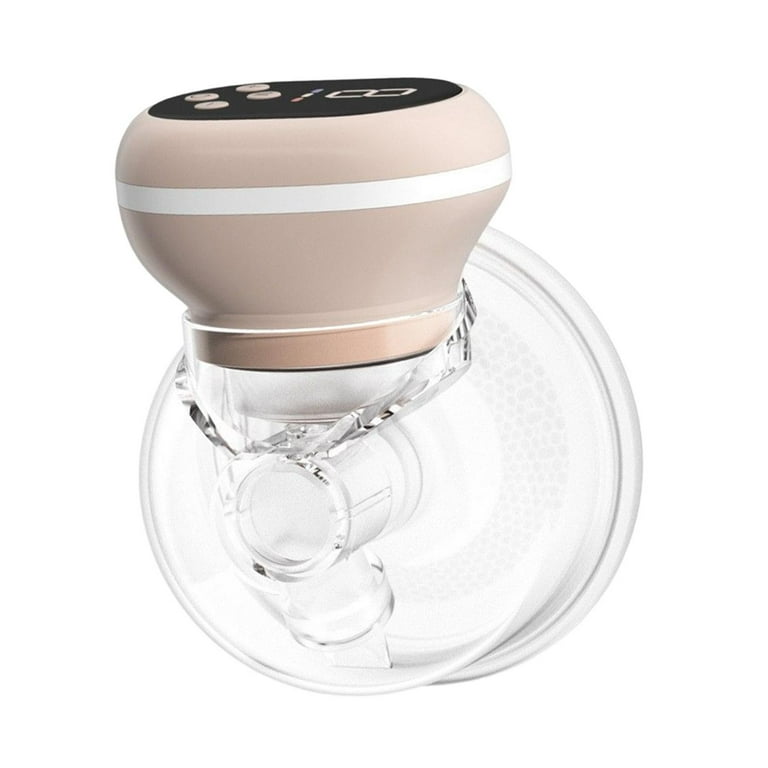To reduce noise in a small office, utilize sound-absorbing materials and furniture, such as carpets and curtains. Implement acoustic panels on walls and ceilings to minimize sound reverberation.
Creating designated quiet zones can also help in reducing noise levels. Additionally, encourage employees to use headphones for increased focus and productivity. Noise-cancelling devices like white noise machines can aid in masking unwanted sounds. By combining these strategies, you can create a quieter and more conducive work environment for everyone in the small office.
It is important to address noise issues promptly to enhance overall comfort and efficiency in the workplace.

1. Identify The Noise Sources
In order to reduce noise in a small office, it is essential to first identify the sources of the noise. By pinpointing the specific areas or factors that contribute to the noise levels, you can then take appropriate measures to mitigate the problem.
1.1 Equipment And Machinery
One of the main sources of noise in an office environment is the equipment and machinery used for daily operations. These can include printers, scanners, copiers, and other office appliances that produce loud sounds when in use.
To address this issue, consider:
- Placing equipment in a separate, soundproofed room or area to minimize the noise impact on others.
- Using quieter models of equipment and machinery that are specifically designed to reduce noise levels.
- Regularly maintaining and servicing the equipment to ensure they are in good working condition and don’t produce excessive noise.
1.2 People And Conversation
Another significant source of noise in a small office is people and conversation. While interaction and collaboration are essential for productivity, excessive noise from conversations can disrupt concentration and hinder work performance.
To manage this issue effectively, try the following strategies:
- Implementing sound-absorbing materials such as acoustic panels, carpets, or curtains to reduce noise reverberation and echo.
- Designating quiet zones or areas for employees who require a quiet working environment.
- Promoting open communication about noise levels and encouraging employees to be mindful of their noise levels during conversations.
- Using noise-cancelling headphones or white noise machines to mask external noise and create a more peaceful working atmosphere.
By identifying the specific noise sources in your small office and taking appropriate steps to address them, you can create a quieter and more conducive work environment for increased productivity and employee satisfaction.
2. Soundproof The Walls
To create a peaceful work environment, soundproofing the walls in a small office is essential. This can significantly reduce distractions and improve productivity.
2.1 Use Acoustic Panels
Acoustic panels are designed to absorb sound waves, reducing noise levels and echoes inside the office.
2.2 Install Soundproof Curtains
Soundproof curtains can block outside noise and enhance privacy within the workspace.
3. Improve Office Layout
Improving the office layout can significantly reduce noise in a small office, creating a more serene and productive work environment. By reorganizing the space and implementing smart design tactics, you can minimize distractions and enhance focus.
3.1 Create Separate Areas
Creating separate areas within the office can help to mitigate noise disturbances. Consider utilizing room dividers, screens, or bookshelves to designate distinct zones for different tasks. A designated quiet area can be beneficial for tasks that require intense concentration, while collaborative zones encourage interaction without disrupting the entire workspace.
3.2 Rearrange Furniture For Noise Reduction
Rearranging office furniture strategically can have a notable impact on noise reduction. Placing large, upholstered furniture pieces and sound-absorbing materials strategically throughout the space can help to muffle sound and minimize reverberation. Additionally, positioning workstations in a manner that minimizes direct sound paths can further diminish noise levels and create a more harmonious work environment.
4. Control Background Noise
In a small office, controlling background noise is crucial for maintaining a productive work environment. Excessive background noise can be distracting and hinder concentration, affecting overall work efficiency. Here are some effective ways to control background noise in a small office:
4.1 Use White Noise Machines
White noise machines are incredibly useful in drowning out disruptive sounds in a small office setting. These machines emit a consistent, soothing sound that can mask surrounding noises, helping employees focus on their tasks with minimal distractions.
4.2 Play Soothing Music Or Nature Sounds
Another effective way to control background noise is by playing soothing music or nature sounds in the office. This can create a more pleasant acoustic environment and minimize the impact of external disturbances.
5. Encourage Noise-free Behavior
Creating a noise-free environment in a small office requires a deliberate effort from both the management and employees. Encouraging noise-free behavior not only enhances productivity but also fosters a harmonious work environment.
5.1 Establish Noise-free Zones
To minimize distractions, establish designated noise-free zones within the office premises. These areas can be earmarked for tasks requiring intense concentration, such as quiet corners for reading or individual work booths.
5.2 Educate Employees About Noise Control
Educating employees about the impact of noise on productivity is vital. Provide guidelines and tips on how to minimize noise disruptions, such as using headphones or taking phone calls in designated areas.

Credit: www.amazon.com
6. Implement Soundproofing Strategies For Doors And Windows
Reducing noise in a small office can be a challenge, but implementing soundproofing strategies for doors and windows can make a significant difference. By minimizing the amount of sound that enters and leaves your office space, you can create a more peaceful and productive work environment. In this section, we’ll explore two effective soundproofing strategies for doors and windows.
6.1 Weatherstripping And Draft Guards
One of the easiest and most cost-effective ways to reduce noise through doors and windows is by installing weatherstripping and draft guards. These simple solutions help seal gaps and cracks, preventing sound from passing through. Weatherstripping involves attaching a strip of rubber, foam, or other materials to the edges of doors and windows to create an airtight seal.
| Benefits of Weatherstripping and Draft Guards |
|---|
| 1. Blocks noise from entering or leaving the office |
| 2. Saves energy by reducing drafts and improving insulation |
| 3. Easy to install and remove as needed |
| 4. Affordable and readily available |
Investing in high-quality weatherstripping and draft guards can provide an immediate improvement in noise reduction, making your small office a quieter and more comfortable space for work.
6.2 Install Soundproofing Window Films
An additional soundproofing strategy for windows is to install soundproofing window films. These specialized films are designed to reduce noise transmission through windows while still allowing natural light to enter. Soundproofing window films are typically made of multiple layers of polyester, acrylic, or other materials that absorb and dampen sound waves.
Benefits of Soundproofing Window Films:
- 1. Blocks external noise such as traffic, construction, and street sounds
- 2. Maintains visibility and natural light
- 3. Enhances insulation, preventing heat or cold transfer through windows
- 4. Easy installation and removal without damaging the window
By installing soundproofing window films, you can create a quieter work environment without sacrificing the benefits of natural light and proper insulation.
7. Upgrade Office Equipment
When working in a small office, the noise from office equipment can be a major distraction. Upgrading your office equipment can be an effective way to reduce noise and increase productivity. In this section, we will explore two strategies to upgrade your office equipment and create a quieter work environment.
7.1 Invest In Quieter Office Equipment
Investing in quieter office equipment is a smart move to minimize noise in your small office. Replace old machines with modern, energy-efficient models that are designed to operate silently. Here are some equipment upgrades to consider:
| Office Equipment | Noise Reduction Features |
|---|---|
| Printers and Scanners | Look for models with noise reduction technology or opt for laser printers that tend to be quieter than inkjet printers. |
| Computers | Choose computers with solid-state drives (SSDs) instead of traditional hard drives as they produce less noise and vibrations. |
| Keyboards and Mice | Opt for ergonomic keyboards and mice designed to minimize typing and clicking noise. |
By upgrading your office equipment, you can significantly reduce the noise levels in your small office, creating a more peaceful and productive work environment.
7.2 Use Noise-canceling Headsets
If noise from conversations or outside disturbances is still a problem, using noise-canceling headsets can provide an effective solution. These headsets use advanced technology to block out ambient noise, allowing you to focus on your work without distractions.
When choosing noise-canceling headsets, consider the following:
- Active Noise Cancellation: Look for headsets that offer active noise cancellation, which uses microphones to monitor and counteract external noise.
- Comfort and Fit: Ensure the headsets are comfortable to wear for long periods and fit securely to provide maximum noise reduction.
- Wireless Connectivity: Opt for wireless headsets to minimize cable clutter and improve mobility.
Noise-canceling headsets are an excellent investment for individuals working in a noisy office environment. By blocking out unwanted noise, you can concentrate on your tasks, boosting productivity and reducing stress.

Credit: www.walmart.com
8. Regular Maintenance And Inspections
Keep your small office noise-free and productive by staying on top of regular maintenance and inspections.
8.1 Check For Plumbing And Hvac Issues
Regularly inspect plumbing and HVAC systems for potential noise sources.
8.2 Evaluate The Office Space For Noise Problems
Assess your office space for any noise issues that may be affecting productivity.

Frequently Asked Questions Of How To Reduce Noise In A Small Office
What Can I Put In My Office To Absorb Sound?
To absorb sound in your office, consider using acoustic panels, curtains, rugs, or plants. These items help reduce noise levels for a quieter work environment.
How Can I Make My Office Soundproof?
To make your office soundproof, you can: 1. Install acoustic panels or soundproof curtains. 2. Seal gaps around doors and windows with weatherstripping. 3. Use thick rugs or carpets on the floor to absorb noise. 4. Add bookshelves or other furniture to help absorb sound.
5. Use white noise machines or background music to mask unwanted noise.
How Do You Deal With Noisy Office?
To deal with a noisy office, consider using noise-cancelling headphones, white noise machines, or soundproofing materials. Establish quiet zones and encourage respectful communication. If necessary, bring up the issue with management or human resources for further solutions.
What Is The Most Effective Way To Reduce Noise In The Workplace?
The most effective way to reduce noise in the workplace is by using sound-absorbing materials, creating designated quiet areas, implementing noise-canceling headphones, and enforcing quiet hours. Additionally, regular maintenance of equipment and educating employees on noise control can also help minimize workplace noise.
Conclusion
Creating a peaceful work environment is crucial. Implement noise reduction solutions for a harmonious office. By following these tips, you can enhance productivity and focus. Remember, small changes can make a big difference in reducing noise distractions. Prioritize a quiet workspace for increased efficiency and employee satisfaction.

